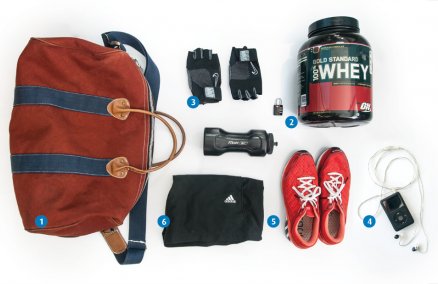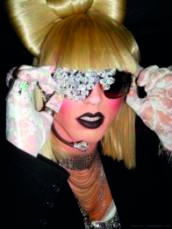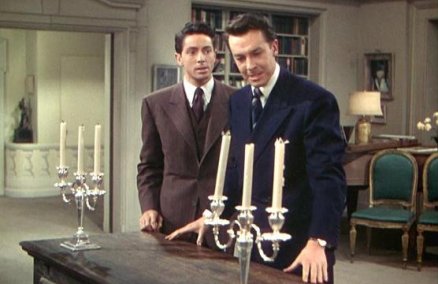FACE LIFT
• THE PATIENT: MRS. H., age 55
• The Job: Theeraporn Clinic
• The Cost: B70,000
Why did you choose to get a face lift?
My cheeks and especially my lower eyelids were being attacked by gravity. I did all the moisturizing and facial massaging but nothing really helped. So I stopped fiddling and decided to get it done.
How did you pick your doctor?
I had heard of my particular doctor for a while, and I knew that he had at least 20 years experience doing this. Plus, one of my best friends also had surgery done by him, and she confirmed his skills.
How did your first appointment go?
He looked at my face, told me how he could fix the flaws and I agreed to do what he suggested. The clinic immediately gave me 3-4 pills to swallow before sending me to the operating room. I guess it was a mix of sedative and painkillers.
And the surgery?
I lay on the bed while the doctor kept me occupied with random chit chat. Even though there was no pain, I had this sensation as if ants were biting the area between my ear, and my cheek. The surgery took about an hour to finish.
And afterwards?
I didn’t really feel anything after the operation. They covered the stitches with cotton gauze to stop the bleeding, and also placed a headband across my head to make my face look normal. The doctor told me to go see him again after one week to remove the stitches.
Did it hurt?
I felt a little achey the next day. It was bearable, but I needed to take very good care of the wounds, and wasn’t able to wash my hair for a whole week. The ache disappeared on the second week. It felt great.
How do you like the results?
The excess skin vanished and my face became firmer. Most people can’t tell I had a face lift. Instead, they think I just took very good care of my face, and that I look so much younger than I really am. The surgery was quite expensive, but it gave me a great deal of satisfaction. So I’d say, if you’ve got the money, do it.”
Non-Invasive Alternative
Carboxy instead of Liposuction
THE PATIENT: MISS T., age 32
The Job: Carboxy Therapy, Gaysorn Plaza
The Cost: B500-B1,000 per session
WHY: I’ve always felt that my arms were too big and not very proportionate when compared to other parts of my body.
HOW: They made me lie down on the bed and then used two latex tubes to tighten my arms; one near the shoulder, and the other, next to my elbow. Then they pinned a very small needle attached with a flexible tube into my arm and started pumping in the gas. I told them to stop when I started to feel an unbearable pressure in my arm. They left the needle in for the gas to do its work. After twenty minutes, they pulled the needle out.
WHY: One good thing about Carboxy is that there’s no need for a special care after the procedure, unlike liposuction. There was nothing changed, only my arms swelled for an hour. It felt like I had just done an exhausting arm exercise.
THE PAIN: It was a little sore during the first phase of the process. Then I’d felt an enormous pressure in my arm. I’ve heard from some people that they’d normally be able to take in about 100-gas pressure unit, but for me, I had it at only 10, and couldn’t take anymore. It was not only my arm that hurt, but the pressure spread throughout my whole body.
THE RESULTS: My arms weren’t really smaller. But I think it’s actually because I needed to do it several times to get results. My friends got what they wanted by their third session. But to tell the truth, I couldn’t bear the pain, and I’m not going back—ever!
What the Doc Says
“If you have the money, I’d say, have a try, but in my opinion, liposuction really works. I’m not saying there isn’t any risk. The surgery can worsen what you’ve already got, but to tell you the truth, I think Carboxy’s a waste of time.” —Dr Chartchai Rattanamahattana
SEX CHANGE (GENDER REASSIGNMENT SURGERY)
• THE PATIENT: Miss V., age 31
• The HOSPITAL: Piyavet Hospital
• The Cost: B200,000
Why did you decide to get the surgery?
All my life I’ve wanted to become a woman, so I decided to go ahead to complete my femininity.
How did you pick the surgeon?
I was lucky that my mother has a doctor friend, who happens to be a great surgeon. She recommended me to a doctor at Piyavet Hospital. The best thing was that they did monthly check ups to follow up on how I was doing.
What came before the operation?
First, they sent me to have a talk with their psychologist and see if I was truly ready to get it done. I also needed to have an HIV test, and blood pressure check. Once I passed all the examinations, the doctor sent me home with a five-day meal timetable. I was only allowed to have liquid food like soups or very plain rice porridge so that my body basically contained nothing but water.
How did the operation go?
Lying on the bed, the doctor told me to relax and then injected the sedative into a vein on the back of my hand. In less than five minutes, I fell into a very deep sleep. The next thing I knew, I was already in the ward. I was told I was in the operating room for about seven hours.
How did you feel?
I woke up feeling very blurry. There were tubes everywhere. The saline drip was inserted into my left hand and the pulse rate meter on the right. There was also a tube attached into the bulging part of my new female sex organ to take the blood out of my body. I was also new to the whole female peeing thing so they had another tube inserted into my urethra to ease me into the process. On the third day after surgery, my body got used to the new organ and I was ready to pee on my own.
Did it hurt?
I have to admit it was extremely painful from the moment I woke up. I couldn’t move much and that part was swollen for almost two months. But after that, the scars started to disappear and the pain had gone completely. I could sit and walk just the way I used to.
How do you feel now?
I have more confidence, and feel more like myself. People keep telling me that my body shape really changed and looks more feminine in every way. I think it’s because there is no longer an organ producing male hormones left in my body. Still, I also have to take the birth control pill every day to help maintain the right hormone balance. In terms of sex I have the same feelings as any women. I just don’t get quite as much lubrication as they might when aroused.
What the Doc Says
“Sexual Reassignment is a big operation and the patients definitely need proper counseling with a psychologist to confirm that they’re making the right decision. Once you’ve done it, there’s no turning back. It’s also perhaps more risky than other surgeries, so the candidate will need to do a lot of research and try not to be induced by commercial ads.” —Dr. Chartchai Rattanamahattana
Blepharoplasty (Double Eyelid Surgery)
The PATIENT: MISS P., age 21
The HOSPITAL: Bangmod Hospital
The Cost: B20,000
Why did you want this operation?
I’m [ethnically] Chinese and so I have small eyes. It would take me a lot of time in the morning to do my makeup, especially my eyes, as I used a special glue that helps double my eyelids. My parents thought it wasn’t very healthy, too. Still they did think that having bigger eyes could help improve my fortune, as per Chinese beliefs.
How did you pick the hospital?
I had a chance to talk to this movie producer who knows a lot of celebrities that had the operation done. He suggested that I do it at Bangmod because they’ve done a lot of great work. Then I did a lot more research on the Internet about the surgery methods, and what I should be expecting if I decided to do it.
What happened next?
After all the research, I made an appointment with the hospital then got to meet the surgeon. I had my eyelids glued so I could show them how I would like it to be. The doctor told me he could make that happen right away and I said, “Yes!” I had no time to prepare. The only thing I could do at that time was to tell myself everything would work out fine.
How did the operation go?
Once I walked into the surgery room, I was a bit paranoid. They told me to lie on the bed, and turned on some relaxing music to calm me down. The doctor injected the anesthetic into the area around my eyes then waited a bit for it to become numb. I was pretty nervous and my mind kept worrying about the result, so I couldn’t sleep. I could feel it when the doctor did something to my eyes and when he was doing the suturing. Luckily, I didn’t feel any pain.
How did you feel after the operation?
I was shocked, and started crying when I saw myself in the mirror after the 30-minute surgery. There were scars, and stitches coated with bloodstains almost everywhere on my face. Seeing the blood, I suddenly felt a massive pain around my eyes.
How long did it hurt?
My eyes were huge because of the swelling for about a week, but this did reduce by the second week. I was told to quit smoking and not to put on eye makeup for two weeks. I also had to clean the stitches with a saline solution everyday before taking a shower. The pain was taken care of by aspirin and my life got back to normal in about two weeks.
Are you happy with the results?
Most of the people who saw my new eyes said I looked prettier. I think I haven’t changed that much though. It’s only the eye feature that’s now sharper. The best thing is that my morning makeup routine is so much easier.
Eye Op Facts
1. The doctor will administer a small amount of anesthetic in the eye area, and create the incision lines by cutting the eyelids with the blade.
2. For patients with fat on the eyelid, the doctor will remove some of the fat and excess skin from the upper eyelid.
3. They use the smallest possible sized needle with removable or absorbable sutures to join together the eyelids, thus reducing the size of the wound and recovery time.
Source: Yanhee Hospital
Essentials
Bangmod Hospital. 59/7, Rama 2 Rd., 02-867-0606. www.bangmodhos.com
Dr. Somsak Khunjak’s Clinic. 410/43, Ratchada Soi 24, 02-541-5301 Gaysorn Plaza. 999, Ploenchit Rd., 02-656-1149. www.gaysorn.com
Piyavate Hospital. 998, Rimklongsamsen Rd., 02-625-6500. www.piyavate.com
Samitivej Sukhumvit Hospital. 133, Sukhumvit Soi 49, 02-711-8000. www.samitivejhospitals.com
Theeraporn Clinic. 422, Ta Dindaeng, Klongsan, 02-437-1525
Yanhee Hospital. 454, Charansanitwong Rd., 02-879-0300. www.yanhee.net
Whoa, slow down, tiger. Don't just rush out and get one done, read our Q&A with Dr. Chartchai Rattanamahattana, M.D., Board Certified Plastic and Cosmetic Surgeon at Samitivej Sukhumvit Hospital.
Did you know that there's 18% increase each year of Thais heading to Korea for plastic surgery?























 What do you envy about each other?
What do you envy about each other? 

